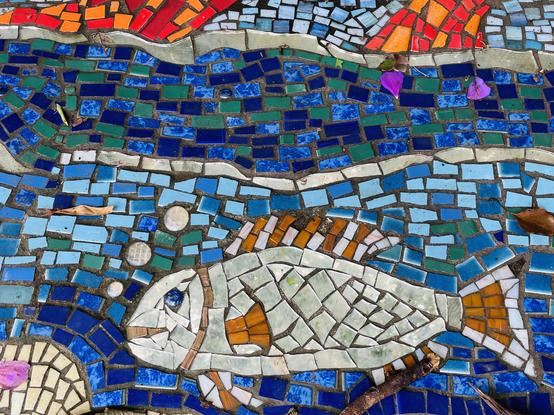🥥 Truly the world is in dire straights, NSW.Biodiversity.
Referred to in Spain as "Los Patos de Salvador Dali," platypuses, or "nightmare ducks," as they are called in Australia, are now endangered in their homeland. 🥥
#Platypuses #Australia #Spain #SalvadorDali #Nightmares #TuckersBalls
To wit:
Are platypuses called, "nightmare ducks," in Oz?
Eye know they're called, "Los patos de Salvador Dalí," in Spain. 🥥
#Platypus #Platypuses #Australia #Oz #Spain #Ducks #TuckersBalls
NSW platypuses are accumulating the “forever chemical” perfluorooctane sulfonate (PFOS) in very high concentrations.
"The platypus (Ornithorhynchus anatinus) is a semi-aquatic monotreme that occupies a high trophic position in the freshwater ecosystems of eastern mainland Australia and Tasmania. Platypuses are continuously exposed to anthropogenic contaminants including perfluorooctane sulfonate (PFOS). This study examined PFOS concentrations in the livers of deceased platypuses (eight wild; one captive) that were opportunistically collected across NSW over a two- and a half-year period. There was a large variation in PFOS concentrations, ranging from < 1 µg/kg to 1200 µg/kg. This study presents the first report of PFOS contamination in platypuses, revealing their PFOS levels are broadly similar to those found in river otters (Lutra canadensis) and lower than those in American mink (Mustela vison), both which occupy similar ecological niches in freshwater systems. This study raises concerns about the impact of PFOS on platypus health."
"Platypuses are vulnerable to many impacts associated with human activity including hydrological changes, decline in water quality, increase in litter and discarded fishing line, illegal opera house nets (yabby traps) and water contamination...There are no guidelines on what constitutes safe concentrations of PFOS in wildlife."
>>
Warwick, K.G., Wright, I.A., Whinfield, J. et al. First report of accumulation of perfluorooctane sulfonate (PFOS) in platypuses (Ornithorhynchus anatinus) in New South Wales, Australia. Environ Sci Pollut Res 31, 51037–51042 (2024). https://doi.org/10.1007/s11356-024-34704-w
#pollution #water #rivers #contamination #NSW #Wildlife #platypus #platypuses #penguins #PFOS #PFAS #ForeverChemicals #Gleniffer #bellingen #NeverNever #bellinger #catchment #AquaticInvertebrates #DrinkingWater #FoodChain #SyntheticChemicals
First report of accumulation of perfluorooctane sulfonate (PFOS) in platypuses (Ornithorhynchus anatinus) in New South Wales, Australia - Environmental Science and Pollution Research
The platypus (Ornithorhynchus anatinus) is a semi-aquatic monotreme that occupies a high trophic position in the freshwater ecosystems of eastern mainland Australia and Tasmania. Platypuses are continuously exposed to anthropogenic contaminants including perfluorooctane sulfonate (PFOS). This study examined PFOS concentrations in the livers of deceased platypuses (eight wild; one captive) that were opportunistically collected across NSW over a two- and a half-year period. There was a large variation in PFOS concentrations, ranging from < 1 µg/kg to 1200 µg/kg. This study presents the first report of PFOS contamination in platypuses, revealing their PFOS levels are broadly similar to those found in river otters (Lutra canadensis) and lower than those in American mink (Mustela vison), both which occupy similar ecological niches in freshwater systems. This study raises concerns about the impact of PFOS on platypus health.
Waterways contaminated with "forever chemicals"
The fate of Bellingen's platypuses
"An Australian-first study found perfluorooctane sulfonate (PFOS) in the liver of deceased platypuses collected from numerous rivers in eastern NSW. PFOS is toxic to humans and has been linked to some cancers."
"Scientists from Western Sydney University (WSU) have discovered perfluorooctane sulfonate (PFOS) in the livers of eight deceased platypuses collected from numerous eastern NSW rivers, from the north coast in Bellingen to the alps of Jindabyne."
"All eight wild platypuses collected from NSW waterways over the past two and a half years returned results with concentrations of some PFOS in them, ranging from 4 micrograms per kilogram (µg/kg) to 1,200 µg/kg — some of the highest concentrations of any species in the world."
>>
https://www.abc.net.au/news/2024-08-20/australia-first-study-finds-forever-chemicals-in-platypuses/104244072
Platypus Survival - Inspired by True Events
https://bellingenarea.blogspot.com/2023/11/platypus-survival-inspired-by-true.html
#platypuses #Bellingen #rivers #creeks #water #NSW #PFOS #pollution #sentinels #PerfluorooctaneSulfonate #FirefightingFoam #contamination #monotremes #wildlife #chemical #FoodChain #MidNorthCoast
The absence of a substantial stomach in #platypuses and short-beaked #echidnas has baffled scientists for centuries, but a #study has found a specific #gene that may be the cause of their strange digestive system.
So, how do these unique creatures digest their food? And how do they get by without a conventional #stomach?
The University of Adelaide PhD Candidate Jackson Dann shares his “bizarre” research with us in the latest 60 Seconds of Science.
🎥 Taronga Zoo Sydney
#australia #australiananimal #australiananimals #dna #research #facts #education #knowledge
#academia #research #academicchatter #biodiversity #ecology #biology #food #nature #wildlife #science #scientist
Recreational fishing is a popular pastime in Australia’s inland rivers and streams. Unfortunately, in the process, many people are unwittingly killing platypuses (Ornithorhynchus anatinus).
Platypuses can become trapped in commonly-used yabby nets or tangled in fishing wire, causing them to drown.
Learn more about what we can do to continue enjoying fishing while protecting our platypuses… https://ausgeo.co/fishingplatypus
#ausgeo #australia #seeaustralia #wildlife #platypus #platypuses #nature #seal
#environment #pollution #government #nature #wildlife
"How can #platypuses be #mammals when they lay #eggs ?" 🤔 🤣🤣🤣
https://eu.pressconnects.com/story/news/local/2014/09/20/can-platypuses-mammals-lay-eggs/15842839/
Good morning! Today I learned that the #platypus does not have a stomach.
From #NationalGeographic, "How the Platypus and a Quarter of Fish Lost Their Stomachs:" https://www.nationalgeographic.com/science/article/how-the-platypus-and-a-quarter-of-fishes-lost-their-stomachs#:~:text=And%20if%20you%20look%20inside,the%20platypus%20has%20no%20stomach.
How the Platypus and a Quarter of Fishes Lost Their Stomachs
The platypus is an anthology of weirdness. It has a leathery duck-like bill, a flattened tail and webbed feet. The males have a venomous claw on their hind feet, and the females lay eggs. And if you look inside a platypus, you’ll find another weird feature: its gullet connects directly to its intestines.
https://www.abc.net.au/news/2023-05-14/platypus-reintroduced-to-royal-national-park-sydney/102344804
#Roads #Extinction #Conservation

